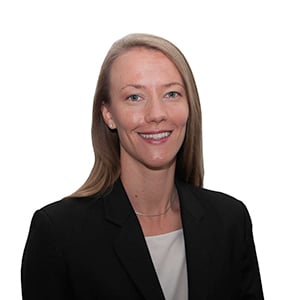Building a community of practice to drive change in the water sector
It is well recognised that having an inclusive workplace with a diverse workforce is the key to responding to the challenges of our industry. It also essential for creating sustainable and innovative organisations that thrive.
The organisations and professionals of the water sector are at different stages on the change journey but almost all are committed to overcoming the barriers and building an inclusive work culture.
In 2017, the Australian Water Association (AWA) supported by the Australian Water Partnership launched the Channeling Change program. This initiative is designed to foster a water industry that embraces diversity, inclusion and equality.
The Queensland branch of the AWA partnered with AECOM to develop Channeling Change Summits to build a community of professionals who are involved in or leading diversity and inclusion programs within their organisations.
Representatives from Queensland Urban Utilities, Unitywater, Seqwater, Gold Coast City Council, AECOM, GHD, the University of Queensland, Stantec, TRILITY, Cardno, and the Queensland branch of the AWA signed up to the inaugural program, which set out an initial four summits to discuss different diversity and inclusion topics: gender, age, ethnicity and mental health.
The summits were designed to be a source of best practice and a place to share experiences, partner in action and support the industry to address diversity and inclusion aspirations.
Gender
Addressing gender equality in our industry is at greatest maturity. We are seeing more females supported in their leadership and, as reported in the Water Services Association of Australia’s Tapping the Power of Inclusion and Diversity in Urban Water report, there are more women in senior leadership and graduate positions across the industry than ever before.
However, we still have a long way to address the gender gap. During the Channeling Change summit on gender, the group shared some of the awesome programs that they are running to address these gaps.
We had a male professional share his experience of being judged for leaving work early to care for his children, and how his workplace was addressing this by developing family-friendly policies and having male executives leading by example.
This has changed the culture of the organisation, with many men now able to spend more time with their families and more women feeling comfortable in their leadership roles.
There are also many organisations that have done exceptional work addressing the pay gap and identifying why this gap exists. Hearing how they have addressed it, and, with the amount of funding they have invested in removing the gap, I feel confident we will achieve pay parity in the very near future.
In relation to diversity, the AWA Queensland branch shared with the group the perception that our gala dinner and awards night was seen as male dominated, and asked for advice on how to address this. This challenged the participants to think about who they had invited to the dinner and helped us to develop ‘diversity centrepieces’, which were placed on tables on the night.
These centrepieces were a highlight of the dinner and, with many guests tweeting about diversity, it was a successful initiative in starting the conversation and celebrating our differences.
Age
In addressing the age diversity of our industry, we recognised that for many of our organisations:
- up to 30% of their workforce are within 5 years of retirement age;
- it is difficult to find professionals with 10-20 years’ experience; and
- it is important to develop programs to keep graduates motivated to remain within the water industry.
We understand the challenges of an age diverse workforce with generational gaps, age clusters within an organisation, and the perception that there would be opposing views. Our group heard the personal journeys of five professionals: a postgraduate student, a young water professional, a mid-career professional, a senior professional and a retired professional.
Each of the professionals shared a powerful story and they were very receptive of our in-depth exploration of their career stage.
From their stories, we learnt:
- The younger or early career professionals are creative and energetic but don’t know where to turn and often jump jobs quickly, seeking stability.
- Mid-career professionals have found their strengths and capitalise on the relationships and networks they have formed in the industry. We heard this group are seeking ways to give back to the industry and opportunities that align with their personal values.
- Our industry professionals who are mid-late career are at the top of their game but also want to find time to pursue their passions and feel fulfilled by passing on their ideas to younger professionals.
- While having no desire to work full time, the retired professionals still wanted to be connected to the sector and were keen to work on a part-time basis. With few opportunities to engage with organisations, many turn to consulting, but this dynamic is often not desired. This group of professionals are very well respected within the industry and we recognised we weren’t capitalising on this experience.
Many of our organisations, including the professional associations, have well-established, active programs for young water professionals. In fact, the younger professionals said they felt that sometimes there was just too much to get involved in.
However, a gap was identified that as an industry we are largely invisible to undergraduate students. In response to this the AWA Queensland branch and Queensland Young Water Professionals committee are exploring ways to increase our engagement with students to expand the knowledge of the career opportunities that exist in our sector and the breadth of disciplines we engage with.
Where the group felt improvements need to be made was with retired professionals, with many organisations recognising that programs that capitalise on their experience and kept the professionals engaged with the organisations were needed.
At the AWA in Queensland, we are reaching out to this group to get involved in mentoring and exploring a social network for retired professionals, a platform to share their CVs and availability to work, and exploring how their membership with the AWA can be identified and valued.
Ethnicity
Australia is a nation of immigrants and the water sector attracts professionals from all over the globe. In this summit we heard from professionals who have immigrated to Australia and how they felt when entering the workforce.
What was heartening was that they felt well supported and embraced by our industry, and gave credit to the AWA as an essential ingredient to that acceptance. We also discussed that many organisations celebrate days of significance for different ethnic groups, which is helping to celebrate our different backgrounds.
This summit drilled down into our connection with our Indigenous culture. Australian census data indicated that 3 in 100 people identify as Indigenous. In our industry we don’t have any readily available data of ethnic groups of our professionals but organisations reported that professionals didn’t often identify themselves as Indigenous, even if they were, due to the cultural significance of this.
The participants of the summit shared their journeys in developing reconciliation action plans and the programs in place to support Indigenous people in gaining employment and their professional development in our sector.
A key strategic project of the AWA’s Strategy’22 is to develop activities to improve understanding of our Indigenous water culture, including the facilitation of an Association Indigenous Reconciliation Action Plan.
Mental health
At a recent diversity and inclusion workshop run by the AWA in partnership with the University of Queensland, WaterAid and Yarra Valley Water, it was identified by participants that addressing mental health within an organisation is a key element to inclusion in the workplace.
The health and wellbeing of our professionals is a priority for the AWA, and you will notice that over the past two years through our conferences and events we have had a number of presenters and sessions that have stimulated the conversation.
We have noted that professionals are now willing to have conversations about mental health, removing the stigma traditionally attached to the topic, and the introduction of mental health days across the industry.
Mental health has shifted from being a human resource problem to being an integral part of our safety strategies. At the mental health summit, we shared the experiences that organisations have had with mental health strategies and were cautioned against putting programs in place too quickly without getting a health check of the organisation first.
The community of practice that has developed from this series of Channeling Change Summits has been a powerhouse of information and advice for the Queensland branch of the AWA and the collaboration of the organisations involved has been inspiring.
All involved pledged to continue this community of practice and to expand the topics, exploring all facets of diversity and inclusion. If you are a professional who is responsible for delivering the diversity and inclusion aspirations of your organisation and would like to get involved, please reach out to the Queensland branch.
For more information on how the AWA is Channeling Change, click here.


